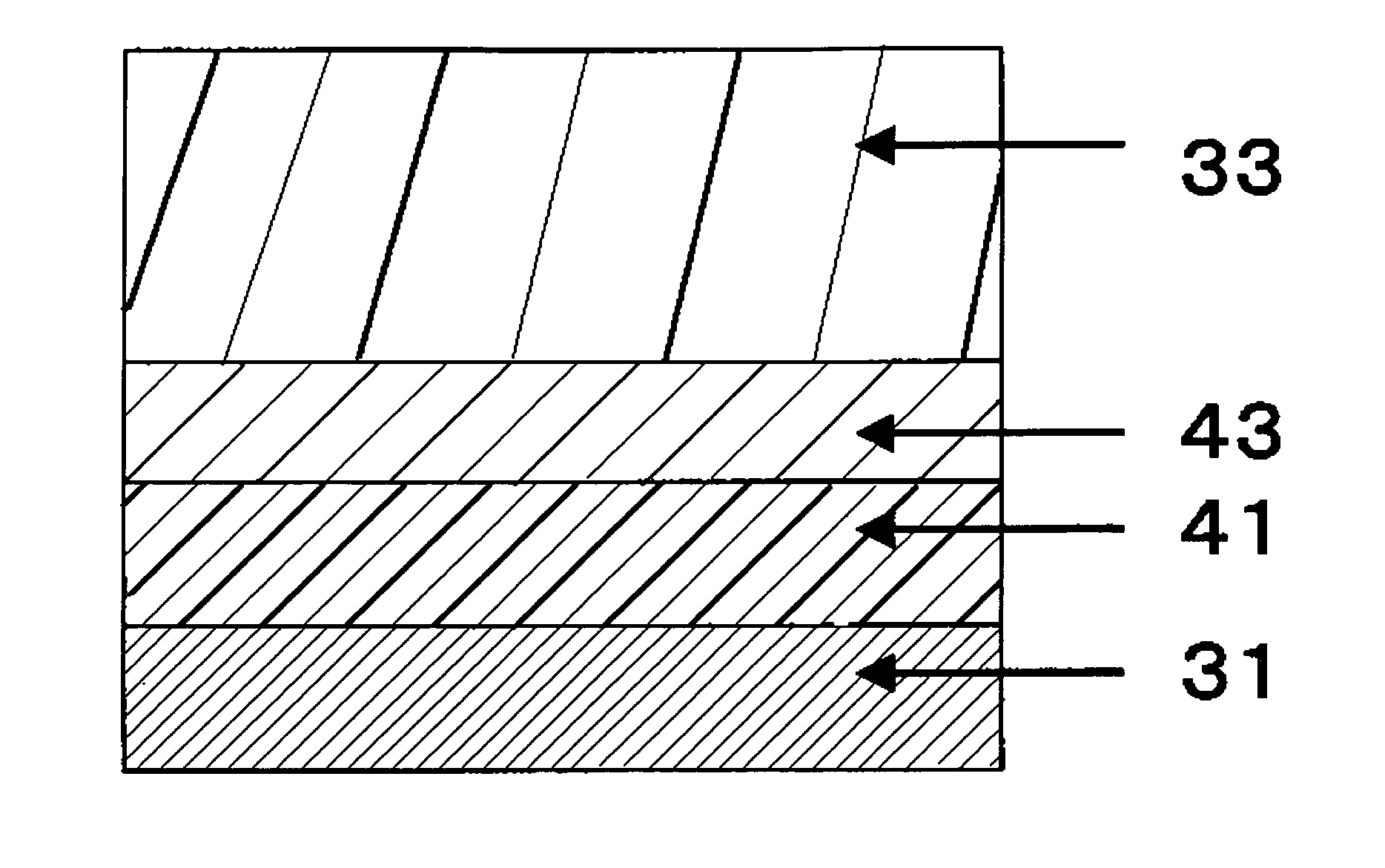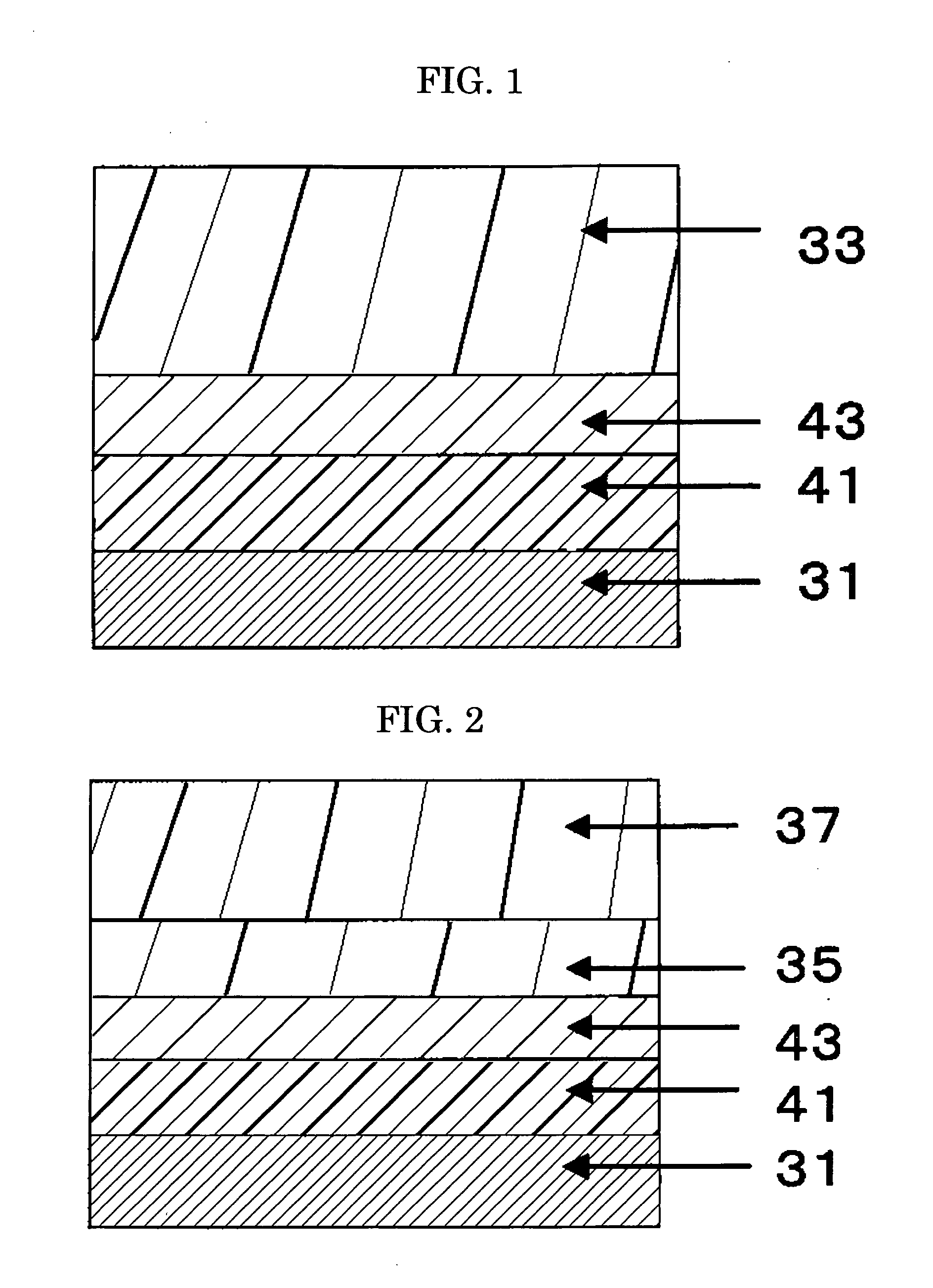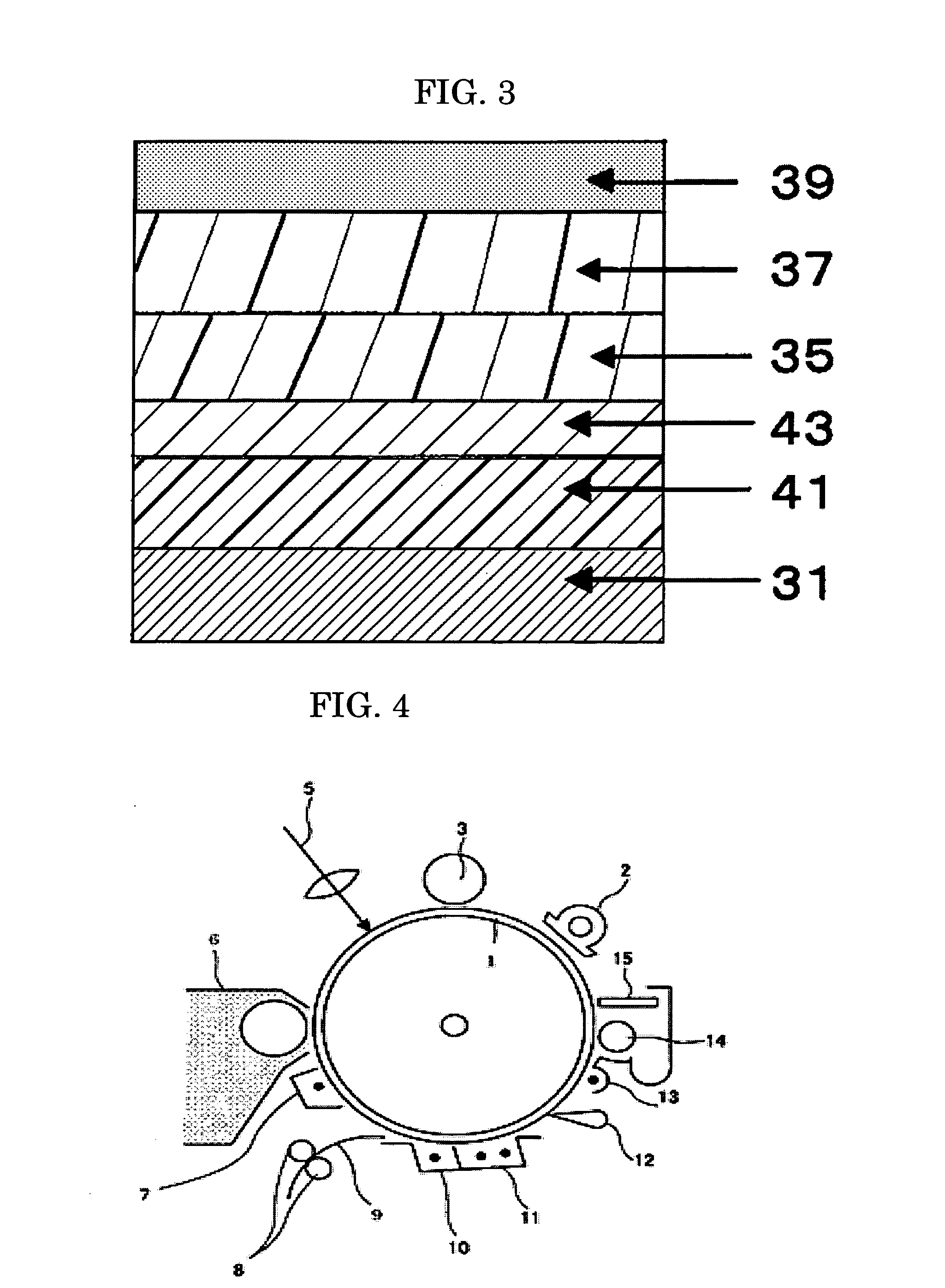Electrophotographic photoconductor, image forming apparatus, image forming method, and process cartridge
a photoconductor and photoconductor technology, applied in the field of electrostatic photoconductor, image forming apparatus, image forming method, and process cartridge, can solve the problems of image fatal defects, smear and black dots, and dot defects, and achieve small variations in electrostatic characteristics, stable image output, and minimal abnormal images
- Summary
- Abstract
- Description
- Claims
- Application Information
AI Technical Summary
Benefits of technology
Problems solved by technology
Method used
Image
Examples
synthesis example 1
PIGMENT SYNTHESIS EXAMPLE 1
Synthesis of Titanyl Phthalocyanine Crystal
[0359] A pigment was prepared in accordance with the method disclosed in JP-A No.2001-19871. More specifically, 29.2 g of 1,3-diiminoisoindoline was mixed with 200 ml of sulfolane, and 20.4 g of titanium tetrabutoxide was added dropwise to the mixture under nitrogen flow. Thereafter, the resultant mixture was gradually heated to 180° C., allowing reaction to take place for 5 hours at 170° C. to 180° C. with agitation. After cooled down, the resulting precipitate was recovered by filtration, washed with chloroform until it became blue, washed with methanol for several times, washed with 80° C. hot water for several times, and dried to produce coarse titanyl phthalocyanine particles. The coarse titanyl phthalocyanine particles were dissolved in 20 volumes of concentrated sulfuric acid, and the resulting mixture was added dropwise to 100 volumes of ice water with agitation. The crystals thus precipitated were recov...
synthesis example 2
PIGMENT SYNTHESIS EXAMPLE 2
Synthesis of Titanyl Phthalocyanine Crystal
[0369] An aqueous paste of a titanyl phthalocyanine pigment was prepared in accordance with the method described in Pigment Synthesis Example 1, and subjected to crystal conversion in the manner described below to produce a titanyl phthanylcyanine crystal having primary particles smaller than those of the titanyl phthanylcyanine crystal prepared in Pigment Synthesis Example 1.
[0370] In accordance with Example 1 of JP-A No.2004-83859, 400 parts of tetrahydrofuran was added to 60 parts of the aqueous paste prepared in Pigment Synthesis Example 1, an aqueous paste of titanyl phthanylcyanine prior to crystal conversion, and vigorously stirred using a homomixer (MARKIIf, KENIS, Ltd.) at 2,000 rpm at room temperature until the color of the paste changed from navy blue to light blue (about 20 minutes after initiation of stirring), followed by immediate filtration under vacuum. The crystals on the filtration device wer...
example 1-1
[0376] An aluminum cylinder of 340 mm length and 30 mm diameter (JIS1050) was adopted as a conductive support, and the following coating solution for charge blocking layer, coating solution for moire preventing layer, coating solution for charge generating layer, and coating solution for charge transporting layer were sequentially applied on the conductive support and dried to produce a photoconductor provided with a charge blocking layer of 0.5 μm thickness, a moire preventing layer of 3.5 μm thickness, a charge generating layer of 0.3 μm thickness, and a charge transporting layer of 25 μm thickness (hereinafter referred to as “Photoconductor 1”).
N-methoxymethylated nylon (FR101, Namariichi Co., Ltd.) 5 PartsMethanol70 Partsn-Butanol30 Parts
[0377]
Titanium oxide (CR-EL, Ishihara Sangyo Kaisha, Ltd. 84 PartsAverage particle diameter = 0.25 μm)Alkyd resin (BEKKOLITE M6401-50-S, Dainippon Ink &33.6 PartsChemicals, Inc., solid content = 50%)Melamine resin (SUPER BEKKAMIN L-121-60,18....
PUM
 Login to View More
Login to View More Abstract
Description
Claims
Application Information
 Login to View More
Login to View More - R&D
- Intellectual Property
- Life Sciences
- Materials
- Tech Scout
- Unparalleled Data Quality
- Higher Quality Content
- 60% Fewer Hallucinations
Browse by: Latest US Patents, China's latest patents, Technical Efficacy Thesaurus, Application Domain, Technology Topic, Popular Technical Reports.
© 2025 PatSnap. All rights reserved.Legal|Privacy policy|Modern Slavery Act Transparency Statement|Sitemap|About US| Contact US: help@patsnap.com



